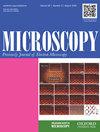ELNES/XANES的机器学习方法
IF 1.8
4区 工程技术
引用次数: 14
摘要
材料表征对于材料开发是必不可少的。特别是,光谱学提供了原子构型、化学键合和振动信息,这些对于理解材料功能的基本机制至关重要。尽管它很重要,但由于实验光谱数据的快速增加,使用人类驱动的方法来解释光谱变得越来越困难,例如手动比较实验光谱与参考/模拟光谱。为了克服这些方法的局限性,我们开发了基于机器学习的新的数据驱动方法。具体来说,我们使用层次聚类、决策树和前馈神经网络来研究电子能量损失近边缘结构(ELNES)光谱,该光谱与X射线吸收近边缘结构的光谱相同。分层聚类和决策树用于解释和预测ELNES/XANES,而前馈神经网络用于从光谱中获得有关材料结构和性能的隐藏信息。此外,我们通过数据扩充构建了一个对噪声具有鲁棒性的预测模型。最后,我们将我们的方法应用于噪声谱,并准确地预测了六个性质。总之,所提出的方法可以为快速准确的光谱解释/预测以及材料函数的局部测量铺平道路。本文章由计算机程序翻译,如有差异,请以英文原文为准。
Machine learning approaches for ELNES/XANES
Materials characterization is indispensable for materials development. In particular, spectroscopy provides atomic configuration, chemical bonding and vibrational information, which are crucial for understanding the mechanism underlying the functions of a material. Despite its importance, the interpretation of spectra using human-driven methods, such as manual comparison of experimental spectra with reference/simulated spectra, is becoming difficult owing to the rapid increase in experimental spectral data. To overcome the limitations of such methods, we develop new data-driven approaches based on machine learning. Specifically, we use hierarchical clustering, a decision tree and a feedforward neural network to investigate the electron energy loss near edge structures (ELNES) spectrum, which is identical to the X-ray absorption near edge structure (XANES) spectrum. Hierarchical clustering and the decision tree are used to interpret and predict ELNES/XANES, while the feedforward neural network is used to obtain hidden information about the material structure and properties from the spectra. Further, we construct a prediction model that is robust against noise by data augmentation. Finally, we apply our method to noisy spectra and predict six properties accurately. In summary, the proposed approaches can pave the way for fast and accurate spectrum interpretation/prediction as well as local measurement of material functions.
求助全文
通过发布文献求助,成功后即可免费获取论文全文。
去求助
来源期刊

Microscopy
工程技术-显微镜技术
自引率
11.10%
发文量
0
审稿时长
>12 weeks
期刊介绍:
Microscopy, previously Journal of Electron Microscopy, promotes research combined with any type of microscopy techniques, applied in life and material sciences. Microscopy is the official journal of the Japanese Society of Microscopy.
 求助内容:
求助内容: 应助结果提醒方式:
应助结果提醒方式:


